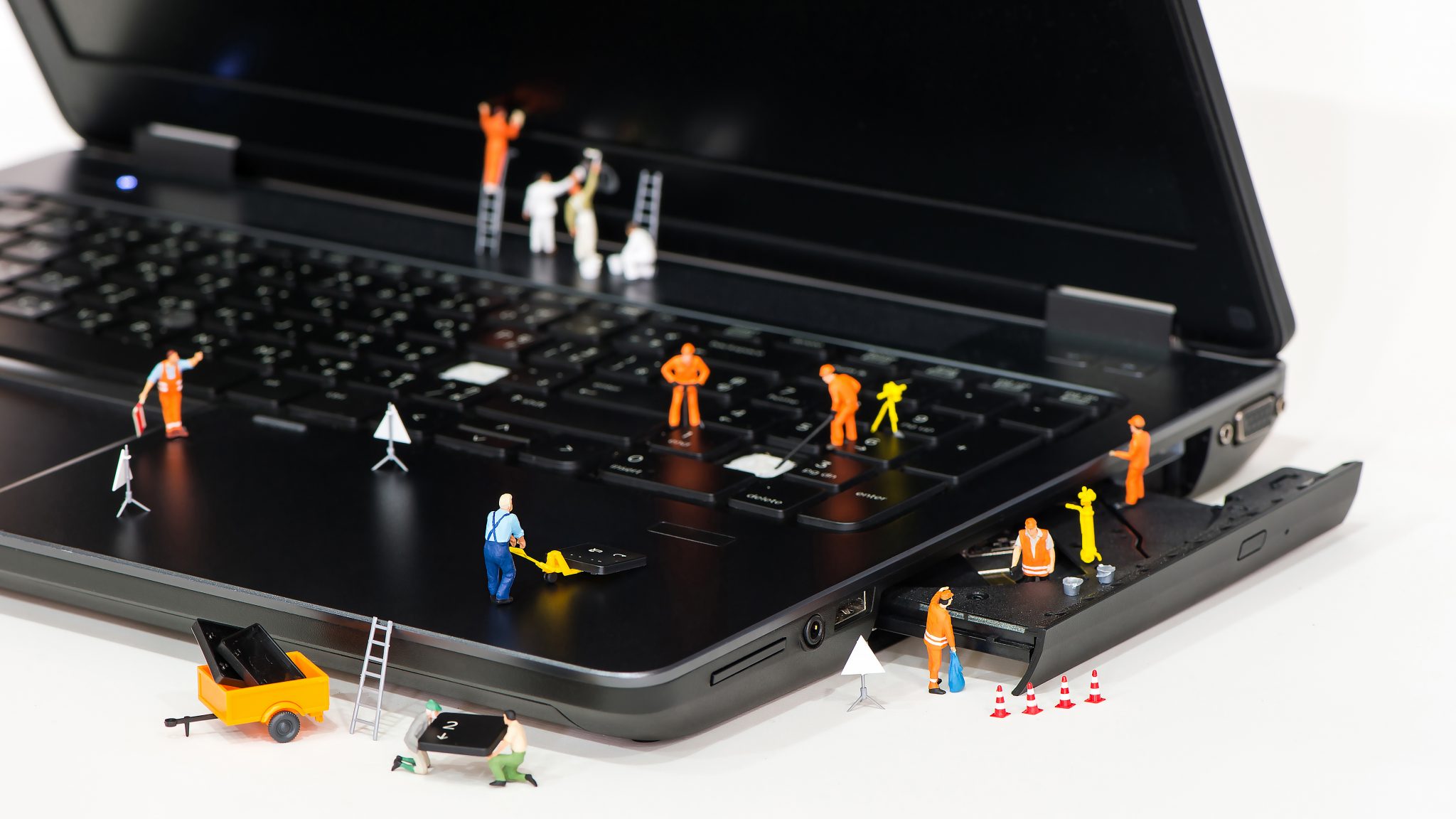Not everyone wants to spend a lot of money on a laptop or has the budget for it. In that case, going for a used or a refurbished one that’s in pretty good shape can be a nice option. If you need a laptop for casual daily use and light work then buying a second-hand laptop is not a bad choice.
On the other hand, the price of electronics has skyrocketed, especially laptops, due to chip shortages and people tend to spend more money on less powerful laptops when they actually need to buy one.
So let’s explore the option of buying a used or refurbished laptop, and equip you with the knowledge to make the right decision if you decide to buy one.
1. Always Check Online Reviews First
I’m sure you’ve heard people claim that they religiously check customer reviews before making any type of a purchase, but right now I want to talk about why you should do it as well.
Most often than not, people don’t take advantage of this opportunity because they don’t know where to look for the proper, customer reviews. I advise looking online, on Facebook pages, blogs, and forums where users have something to say about a topic or device of your choosing.
In my experience, I have found that this is the best way to be informed on all of the product’s strong and weak points so that I can decide whether it’s going to meet my needs or not – and purchase with confidence!
Furthermore, if you happen to spot a common trend within a series of complaints – think over whether whatever disadvantages the product has could sway your decision as a buyer. For example, users might highlight a disadvantage that can be solved with ease through altering some system settings.
2. Ask for a Transaction Proof
Buying a laptop from a seller without knowing whether they are genuine is a risk. But don’t let it get to you! All you have to do is ask for proof of transaction online or ask the seller if they have a receipt. If either of these two options fails, try asking the seller to show you correspondence with the original owner.
If that doesn’t work out either, one can always check by looking at the serial number on the laptop to see if it matches that of the box in which it came in originally. Hurry! Opportunities don’t last long!
When dealing with worn products like used laptops, it’s crucial that the sales receipt is in good condition. Laptops are complex pieces of technology that, if not taken care of properly or if subject to damages during their lifespan, might break down.
When they do break for reasons not related to the warranty period, one may need to bring it back to where it’s purchased in order to have the company repair it at no cost.
3. Make Sure There Are no Bad Scratches
When it comes to buying a used or a refurbished laptop it’s no secret that scratches are the most annoying thing to happen to a laptop. Of course, you can expect some light scratching since it’s been used for some time by the previous owner. However, some laptops may have been used more intensively, and they may have more dents and marks.
On the other hand, if you don’t mind scratches much, you can buy such laptops at a bargain price. However, if the marks and dents on the laptops are pretty deep and sharp you should know that the laptop may have suffered internal damage as the seller probably used it very carelessly.
So, when buying a refurbished laptop online, you have to be very careful, whether it’s Amazon, Snapdeal, or eBay.
4. Check the Display for Dead Pixels
Inspect the screen before you buy! The laptop screen will be one of the most important tools in your business. You don’t want to get it home and find that some bits aren’t working properly. Especially when you’re on a tight budget, something like a bad display can be really disappointing.
This is an easy problem to check before buying; all you need to do is switch it on for a few minutes and then look carefully at the display. Dead pixels are pretty obvious once they happen, so I’m sure you’ll notice them if they do appear on your new laptop! Or you quickly check your laptop for dead pixels by simply googling “dead pixel check” and clicking on the first result. It’s so easy nowadays with free third-party apps and online solutions.
Dead pixels can be easily detected. Whenever you see a small black dot on the screen, don’t assume that it is a dust particle – turn off your monitor and wipe it with a damp cloth. If the spot stays there, it may be a dead pixel.
5. CPU, GPU, RAM and Disk Performance Test
We all love that feeling of multitasking and working on multiple things at once while we’re trying to get our work done – but no matter how much we like it, working on two different things at once can be highly distracting and often makes us feel like we’re not really making any progress!
The same thing goes for using the laptop for multiple different tasks at once. If you notice that your computer is starting to slow down, don’t panic! You may have trouble switching between the programs you are working with – it doesn’t necessarily mean you’ve got a bad computer altogether!
But what will happen if your laptop starts getting slower, or even freezes every once in a while? Well, what really slows down your system depends on two main factors: RAM memory capacity and disk cache/disk storage space. So before buying a used or a refurbished computer, test it out by doing some basic multitasking.
To check if the performance is up to par, use the laptop for about ten minutes. Try opening multiple browser windows and system applications and try to multitask and toggle between them.
If it takes the laptop longer than expected to boot up, don’t just assume it’s old age. Consider that the wear-and-tear on the hard drive may have more to do with its slowness than its actual power. Indeed, over time hard drives slow down no matter how fast they are upon purchase!
But luckily there is a solution to this problem. By purchasing an SSD (Solid State Drive) you can revitalize any laptop or computer. Changing out your laptop drive for this faster alternative will make it feel like you’re using a brand new machine again.
On the other hand, if the seller claims that the laptop has an SSD installed, you may want to check the health and performance status of the SSD by installing a free third-party software and run a diagnostic.
6. Test the Camera and Audio
If you’re looking to buy a second-hand or a refurbished laptop for work, it’s important to check whether the laptop has a good camera and microphone quality or not.
If you can get a hands-on, run some quick tests before buying the laptop. If you plan to attend meetings and play media, check the quality of the built-in camera by taking a few photographs or having a test video call. Even if you use it to just send e-mails, do video calls, and edit documents, you’ll want to ensure that the audio is clear enough.
Additionally, you can try to play a few videos on YouTube over Wi-Fi to quickly test the audio and video quality of the laptop you’re planning to buy.
7. Check the Keyboard
Most commonly used laptops tend to have problems with the keyboard keys; therefore, be sure you check for any quality issues related to them while buying a laptop. When purchasing a laptop, ensure that you test the keyboard by opening an app like Notepad or Microsoft Word and pressing each key on the keyboard a few times.
If while pressing, some keys feel difficult and stop working even though they work the first two times, this is probably because of dust accumulation in some parts of the keyboard which will need cleaning up. The seller should be able to tell you about when exactly such problems occurred, or if there were any particular circumstances (such as excessive dust accumulation).
8. Test All Available Ports
Always check the ports when buying a used or a refurbished laptop. You don’t want to end with a laptop with a charging port that’s not working or not a single USB port. Also check the 3.5mm jack so you can plug and use your headphones, the HDMI, SD card slot if available and other ports.
Specifications to Look for in a Used Laptop
Being 2021, there are a lot of powerful laptops on the market and the minimum required specifications for even basic, essential software has risen tremendously. So to make sure your refurbished or used laptop can handle everything you throw at it, make sure to look for a machine with these minimum specifications:
- 8 GB of RAM or more
- 3rd Gen AMD Ryzen processor or at least an 8th Gen Intel
- minimum resolution of at least 1920×1080 pixels
- SSD
Should I Buy a Used or a Refurbished Laptop?
Buying a used portable computer can help you save a lot of money and, more importantly, will contribute to reducing the carbon footprint on our planet. Some people are inclined not to buy used computers but they shouldn’t be because this product will definitely last longer than any other brand if it’s managed properly!
The only downside to buying a used laptop is that you can get scammed if you don’t know how the second-hand market works or what to look for in a portable computer in good shape.


I enjoyed my reading! Thanks, Kiril, for gathering & sharing such valuable information about used laptops. I hope we will get kinds of stuff like this in the future as well.
Buying second-hand PCs is a great way to save some money. You just have to make the right decision if you decided to buy a second-hand computer. Thanks for sharing such useful information about used laptops.
thank you , i walked through all the above steps to test and check the state of my used laptop i got today.
i found every thing is ok except the keyboard i need to check it more time.
thanks for this helpful article